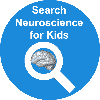US EPA "Kills Pesticide Dead" Cites Risk of Neurological Damage by Chlorpyrifos |
US EPA "Kills Pesticide Dead" Cites Risk of Neurological Damage by Chlorpyrifos |
|
June 13, 2000
A Pesky ProblemAnts, termites, ticks, fleas and cockroaches: they all have their place in nature. That's where they belong - outside, in nature. When these and other bugs invade our homes or infest our pets, we consider them pests. Pests such as cutworms, aphids and maggots damage food crops. Other bugs, such as mosquitoes and certain flies, can transmit disease to livestock and humans. To protect us, our pets and our food supply from these pests, researchers have developed many pesticides to kill them.Let's Spray! Some pesticides belong to a group of chemicals called organophosphates. These chemicals are classified as
"neurotoxins" because they target and poison the nervous system.
Specifically, organophosphates target the acetylcholine neurotransmitter system. Organophosphates inhibit an
enzyme called acetylcholinesterase which breaks
down acetylcholine into acetate and choline. Therefore, in the presence
of organophosphate pesticides, acetylcholine increases
because it is not being broken down. This results in overactivation of
the acetylcholine system which may cause symptoms such as nausea,
dizziness, and respiratory paralysis in humans; high doses of this poison
can even cause death. Many nerve agents (chemical
weapons) also cause illness and death by inhibiting acetylcholinesterase.
Some pesticides belong to a group of chemicals called organophosphates. These chemicals are classified as
"neurotoxins" because they target and poison the nervous system.
Specifically, organophosphates target the acetylcholine neurotransmitter system. Organophosphates inhibit an
enzyme called acetylcholinesterase which breaks
down acetylcholine into acetate and choline. Therefore, in the presence
of organophosphate pesticides, acetylcholine increases
because it is not being broken down. This results in overactivation of
the acetylcholine system which may cause symptoms such as nausea,
dizziness, and respiratory paralysis in humans; high doses of this poison
can even cause death. Many nerve agents (chemical
weapons) also cause illness and death by inhibiting acetylcholinesterase.
The Solution Creates a Problem Sometimes the solution to a problem creates another problem. In the case
of pesticides, some chemicals that kill insects pose a danger to the
health of humans. This may be true for one organophosphate pesticide
called chlorpyrifos. Chlorpyrifos is a chemical
found in more than 800 products, including "Dursban," the most widely used
home insecticide in the US. In addition to its use in the home,
chlorpyrifos is used:
Sometimes the solution to a problem creates another problem. In the case
of pesticides, some chemicals that kill insects pose a danger to the
health of humans. This may be true for one organophosphate pesticide
called chlorpyrifos. Chlorpyrifos is a chemical
found in more than 800 products, including "Dursban," the most widely used
home insecticide in the US. In addition to its use in the home,
chlorpyrifos is used:
The US EPA Acts Because of its potential danger to humans, chlorpyrifos has been banned
for home and garden use by the US Environmental Protection Agency (EPA).
On June 8, 2000, EPA administrator Carol M. Browner announced that
chlorpyrifos will be:
Because of its potential danger to humans, chlorpyrifos has been banned
for home and garden use by the US Environmental Protection Agency (EPA).
On June 8, 2000, EPA administrator Carol M. Browner announced that
chlorpyrifos will be:
 The EPA stated that the main reason for the ban was to protect children from exposure to chlorpyrifos. Although the EPA says that chlorpyrifos is linked to neurological damage, Dow Chemical, the company that makes Dursban, disagrees. In a news release on June 8, 2000, Dow Chemical stated that over 3,600 studies and reports show that chlorpyrifos products "provide wide margins of safety for both adults and children." Nevertheless, Dow Chemical has agreed to follow the ban on chlorpyrifos.
The Future - Safety Rules!Even with the ban on chlorpyrifos, you, your family, home and school will still be safe from an invasion of ants, mosquitoes, termites and other pests. There are plenty of other chemicals without chlorpyrifos that can still "do the job." |
References and further information:
|
| GO TO: | Neuroscience In The News | Explore the Nervous System | Table of Contents |
![[email]](./gif/menue.gif) Send E-mail |
 Fill out survey |
 Get Newsletter |
 Search Pages |
 Take Notes |